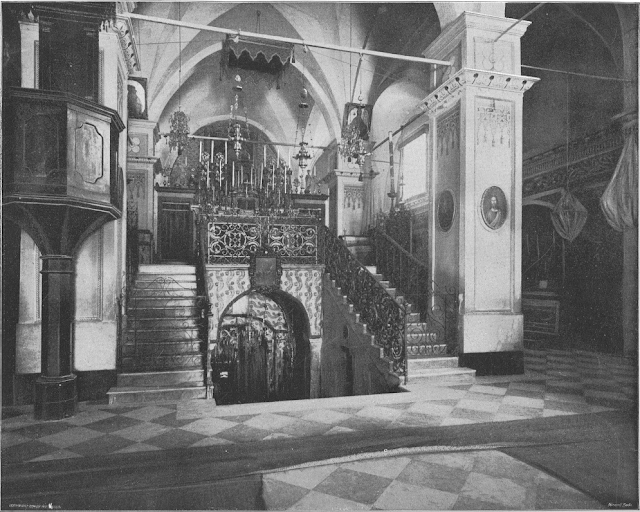Interior Latin Church of Annunciation, Nazareth
It is said, “that the best starting point for a walk through Nazareth is the Latin Monastery.” The Church of the Annunciation is situated within its walls, consequently, it is naturally the first to be visited. In 1620 the famous Druse Emir, Fakr ed Din, subdued this part of Palestine, and by him, permission was given to some Franciscan Monks to build the Church of the Annunciation and a convent near it. Since then Nazareth has continued to be a Christian village. Upon visiting this Franciscan Convent you will be conducted by a solemn, reverend monk of that order into the Church of the Annunciation. You will see its long aisles, its vaulted ceiling, whose arches rest upon four immense pillars. On either side are altars. The high altar is reached by a flight of marble steps on each side. This altar is dedicated to the Angel Gabriel. Behind this altar is the choir, a large, dark and sombre place, from which mass is said at an early hour. One writer says: “I went to the call of the bell, and heard the monks say mass. The mellow tones of the organ and the impressive chanting of the monks were quite affecting in this strange land and sacred place at early dawn.” Nazareth, where our Savior was brought up, is so far away that few people can ever hope to make a journey to it, but the Book of Leviticus, the first portion of the Scriptures, that as a boy in school He studied, is in all our homes. If Nazareth is sacred because He was trained there, should not the Book of Leviticus be doubly sacred because He began His studies there?

Comments